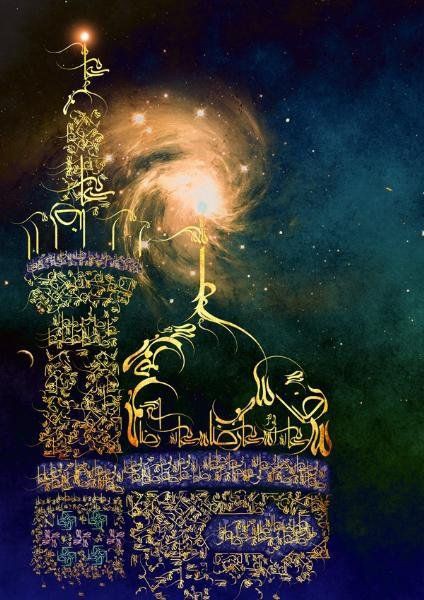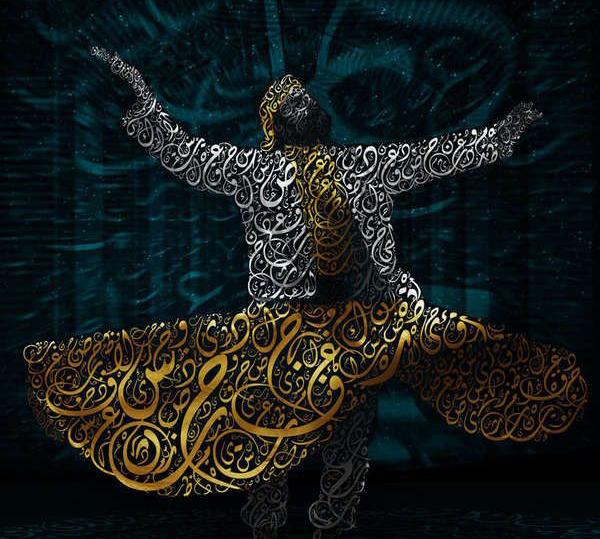Sufism, mystical Islamic belief and practice in which Muslims seek to find the truth of divine love and knowledge through direct personal experience of God. It consists of a variety of mystical paths that are designed to ascertain the nature of humanity and of God and to facilitate the experience of the presence of divine love and wisdom in the world. Islamic mysticism is called taṣawwuf (literally, “to dress in wool”) in Arabic, but it has been called Sufism in Western languages since the early 19th century. An abstract word, Sufism derives from the Arabic term for a mystic, ṣūfī, which is in turn derived from ṣūf, “wool,” plausibly a reference to the woollen garment of early Islamic ascetics. The Sufis are also generally known as “the poor,” fuqara, plural of the Arabic faqir, in Persian darvīsh, whence the English words fakir and dervish.
Though the roots of Islamic mysticism formerly were supposed to have stemmed from various non-Islamic sources in ancient Europe and even India, it now seems established that the movement grew out of early Islamic asceticism that developed as a counterweight to the increasing worldliness of the expanding Muslim community; only later were foreign elements that were compatible with mystical theology and practices adopted and made to conform to Islam.
By educating the masses and deepening the spiritual concerns of the Muslims, Sufism has played an important role in the formation of Muslim society. Opposed to the dry casuistry of the lawyer-divines, the mystics nevertheless scrupulously observed the commands of the divine law. The Sufis have been further responsible for a large-scale missionary activity all over the world, which still continues. Sufis have elaborated the image of the Prophet Muhammad (the founder of Islam) and have thus largely influenced Muslim piety by their Muhammad-mysticism. Sufi vocabulary is important in Persian and other literatures related to it, such as Turkish, Urdu, Sindhi, Pashto, and Punjabi. Through the poetry of these literatures, mystical ideas spread widely among the Muslims. In some countries Sufi leaders were also active politically.

History
Islamic mysticism had several stages of growth, including (1) the appearance of early asceticism, (2) the development of a classical mysticism of divine love, and (3) the rise and proliferation of fraternal orders of mystics. Despite these general stages, however, the history of Islamic mysticism is largely a history of individual mystic experience.
The first stage of Sufism appeared in pious circles as a reaction against the worldliness of the early Umayyad period (661–749). From their practice of constantly meditating on the words in the Quran (the Islamic holy book) about Doomsday, the ascetics became known as “those who always weep” and those who considered this world “a hut of sorrows.” They were distinguished by their scrupulous fulfillment of the injunctions of the Quran and tradition, by many acts of piety, and especially by a predilection for night prayers.
Classical mysticism
The introduction of the element of love, which changed asceticism into mysticism, is ascribed to Rābiʿah al-ʿAdawīyah (died 801), a woman from Basra who first formulated the Sufi ideal of a love of Allah (God) that was disinterested, without hope for paradise and without fear of hell. In the decades after Rābiʿah, mystical trends grew everywhere in the Islamic world, partly through an exchange of ideas with Christian hermits. A number of mystics in the early generations had concentrated their efforts upon tawakkul, absolute trust in God, which became a central concept of Sufism. An Iraqi school of mysticism became noted for its strict self-control and psychological insight. The Iraqi school was initiated by al-Muḥāsibī (died 857)—who believed that purging the soul in preparation for companionship with God was the only value of asceticism. Its teachings of classical sobriety and wisdom were perfected by Junayd of Baghdad (died 910), to whom all later chains of the transmission of doctrine and legitimacy go back. In an Egyptian school of Sufism, the Nubian Dhū al-Nūn (died 859) reputedly introduced the technical term maʿ rifah (“interior knowledge”), as contrasted to learnedness; in his hymnical prayers he joined all nature in the praise of God—an idea based on the Qurʾān and later elaborated in Persian and Turkish poetry. In the Iranian school, Abū Yazīd al-Bisṭāmī (died 874) is usually considered to have been representative of the important doctrine of annihilation of the self, fanāʾ; the strange symbolism of his sayings prefigures part of the terminology of later mystical poets. At the same time the concept of divine love became more central, especially among the Iraqi Sufis. Its main representatives are Nūrī, who offered his life for his brethren, and Sumnūn “the Lover.”
The Path
The path begins with repentance. A mystical guide (shaikh or pīr) accepts the seeker as disciple (mureed), orders him to follow strict ascetic practices, and suggests certain formulas for meditation. It is said that the disciple should be in the hands of the master “like a corpse in the hand of the washer.” The master teaches him constant jihad, or struggle, against the lower soul, often represented as a black dog, which should, however, not be killed but merely tamed and used in the way of God. The mystic dwells in a number of spiritual stations (maqām), which are described in varying sequence, and, after the initial repentance, comprise abstinence, renunciation, and total submission(faqr) —according to Muhammad’s saying, “Poverty is my pride”; poverty was sometimes interpreted as having no interest in anything apart from God, the Rich One, but the concrete meaning of poverty prevailed, which is why the mystic is often denoted as “poor,” fakir or dervish. Patience and gratitude belong to higher stations of the path, and consent is the loving acceptance of every affliction.
On his way to illumination the mystic will undergo such changing spiritual states (ḥāl) as qabḍ and basṭ, constraint and happy spiritual expansion, fear and hope, and longing and intimacy, which are granted by God and last for longer or shorter periods of time, changing in intensity according to the station in which the mystic is abiding at the moment. The way culminates in maʿrifah (“interior knowledge,” “gnosis”) or in maḥabbah (“love”), the central subject of Sufism since the 9th century, which implies a union of lover and beloved, and was therefore violently rejected by the orthodox, for whom “love of God” meant simply obedience. The final goal is fanāʾ (“annihilation”), primarily an ethical concept of annihilating one’s own qualities, according to the prophetic saying “Take over the qualities of God,” but slowly developing into a complete extinction of the personality. Some mystics taught that behind this negative unity where the self is completely effaced, the baqāʾ, (“duration, life in God”) is found: the ecstatic experience, called intoxication, is followed by the “second sobriety”—i.e., the return of the completely transformed mystic into this world where he acts as a living witness of God or continues the “journey in God.” The mystic has reached ḥaqīqah (“realty”), after finishing the ṭarīqah (“path”), which is built upon the sharīʿah (“law”). Later, the disciple is led through fanāʾ fī ashshaykh (“annihilation in the master”) to fanāʾ fīar-Rasūl (“annihilation in the Prophet”) before reaching, if at all, fanāʾ fī-Allāh (“annihilation in God”).

